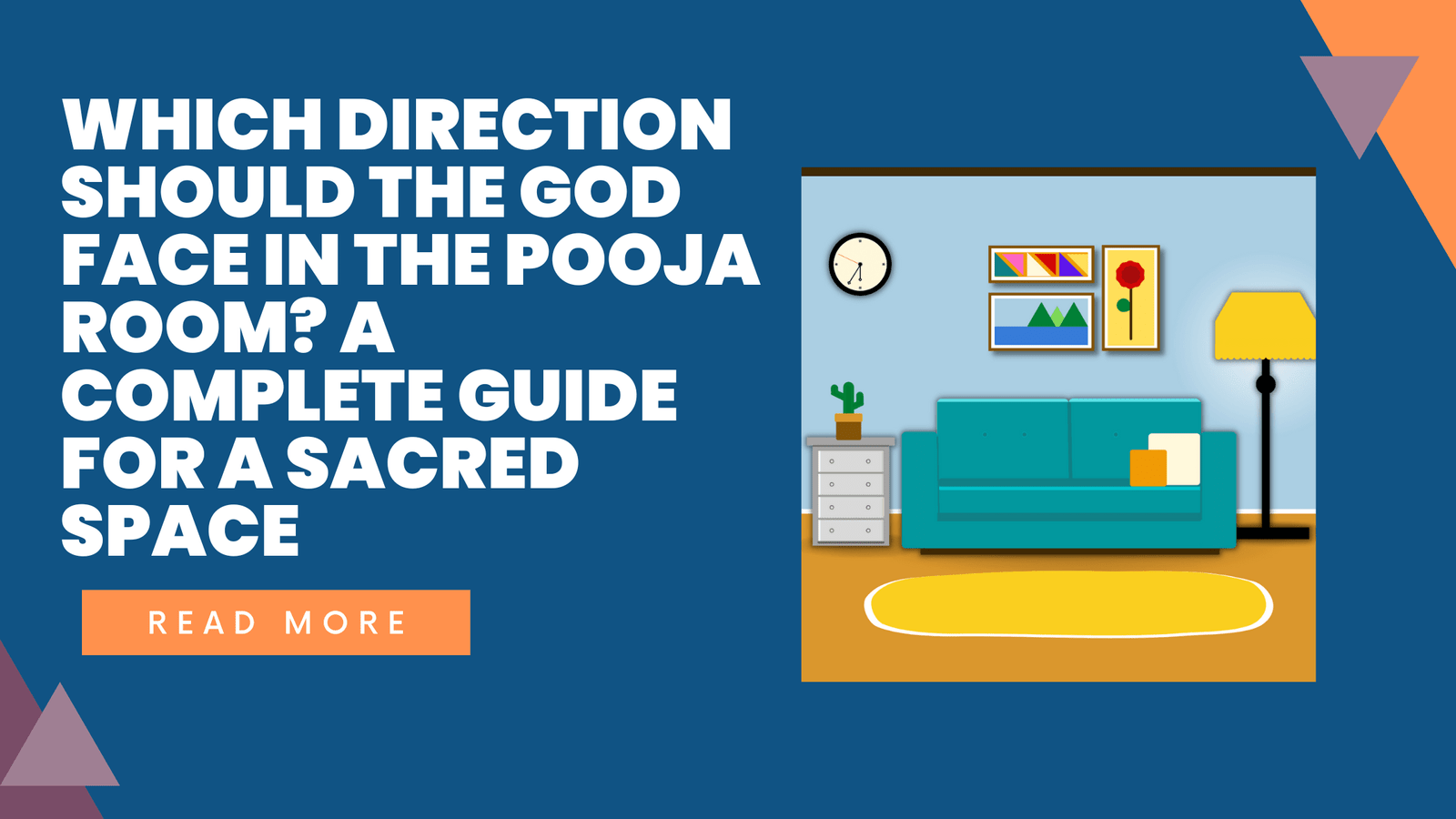Which Direction Should the God Face in the Pooja Room? A Complete Guide for a Sacred Space
A pooja room is the heart of any home, a sacred space where we connect with divine energies, seek blessings, and find inner peace. While setting up a pooja room, one of the most important aspects is the direction in which the deity faces. This not only enhances the spiritual energy but also brings harmony and positivity into your home.
In this blog, we’ll explore the Vastu Shastra principles regarding the direction of the gods in the pooja room and how to create a space filled with divine vibrations.
🕉️ The Importance of Direction in the Pooja Room
According to Vastu Shastra, the ancient Indian science of architecture, the direction in which the deity faces has a significant impact on the energy flow of the space. It’s believed that correct placement enhances spiritual well-being, prosperity, and peace within the home.
📍 Ideal Directions for the God in the Pooja Room
1. East Facing (Best Direction for the Deity)
- Why It’s Ideal: The east is associated with the rising sun, symbolizing new beginnings, positivity, and growth.
- Recommended For: Deities like Lord Vishnu, Lord Shiva, Goddess Durga, and Lord Krishna.
- Benefits: Enhances knowledge, health, and spiritual growth.
2. West Facing (Suitable for Specific Deities)
- Why It’s Ideal: The west represents stability and grounding.
- Recommended For: Goddess Lakshmi (for wealth and prosperity) and Lord Ganesha (remover of obstacles).
- Benefits: Brings balance, prosperity, and harmony.
3. North Facing (For Wealth and Prosperity)
- Why It’s Ideal: North is the direction of Lord Kubera, the god of wealth.
- Recommended For: Goddess Lakshmi, Lord Kubera, and Lord Vishnu.
- Benefits: Attracts financial prosperity and success.
4. South Facing (Avoid If Possible)
- Why It’s Not Preferred: The south is associated with the element of fire and is considered the direction of Yama (god of death).
- When It’s Okay: If necessary, deities like Lord Yama or Lord Hanuman can face south, but with specific precautions.
- Note: Avoid placing the main deity facing south in the pooja room.
🏡 Pooja Room Placement According to Vastu
- Pooja Room Location: Northeast (Ishaan corner) is the most auspicious for the pooja room, as it’s believed to be the direction of divine energy.
- Seating Arrangement: When performing pooja, the person should sit facing east or north to receive positive energy.
- Height of the Altar: The idol or picture should be placed at an elevated level, not on the floor.
🚩 Things to Avoid in the Pooja Room
- No Facing of the Deity Toward the Bathroom: Avoid placing the pooja room near or facing bathrooms.
- Avoid Clutter: Keep the space clean and clutter-free for positive energy flow.
- No Direct Facing of the Deity Toward the Entrance: This can disrupt the energy balance.
🌟 Bonus Tips for a Sacred Pooja Space
- Use Natural Light: Let sunlight fill the pooja room, enhancing the sacred ambiance.
- Decorate with Natural Elements: Add flowers, plants, and sacred symbols like Om, Swastika, or Trishul.
- Maintain Cleanliness: Regular cleaning symbolizes respect and devotion.
🙏 Conclusion
The direction your deity faces in the pooja room plays a significant role in the spiritual and energetic environment of your home. By following Vastu principles, you can create a sacred space that fosters peace, prosperity, and positivity.
May your pooja room be filled with divine blessings and spiritual light! ✨🌸
Would you like me to add more details on specific deities, rituals, or Vastu tips?






